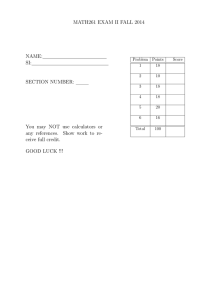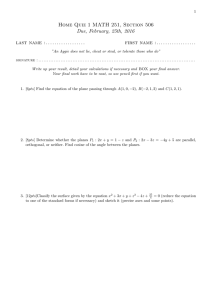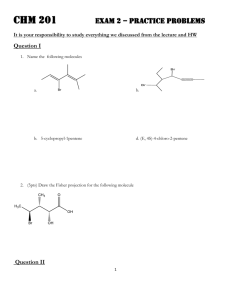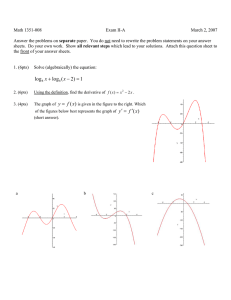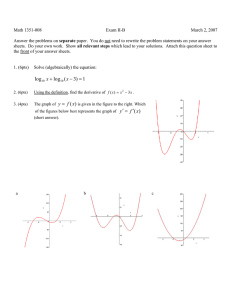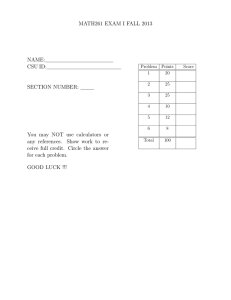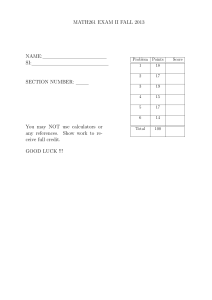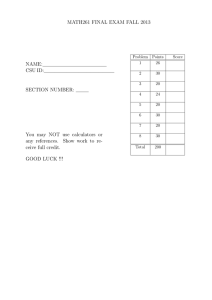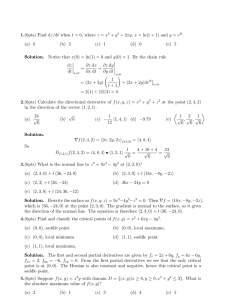MATH261 EXAM II SPRING 2014 NAME: CSU ID: SECTION NUMBER:
advertisement
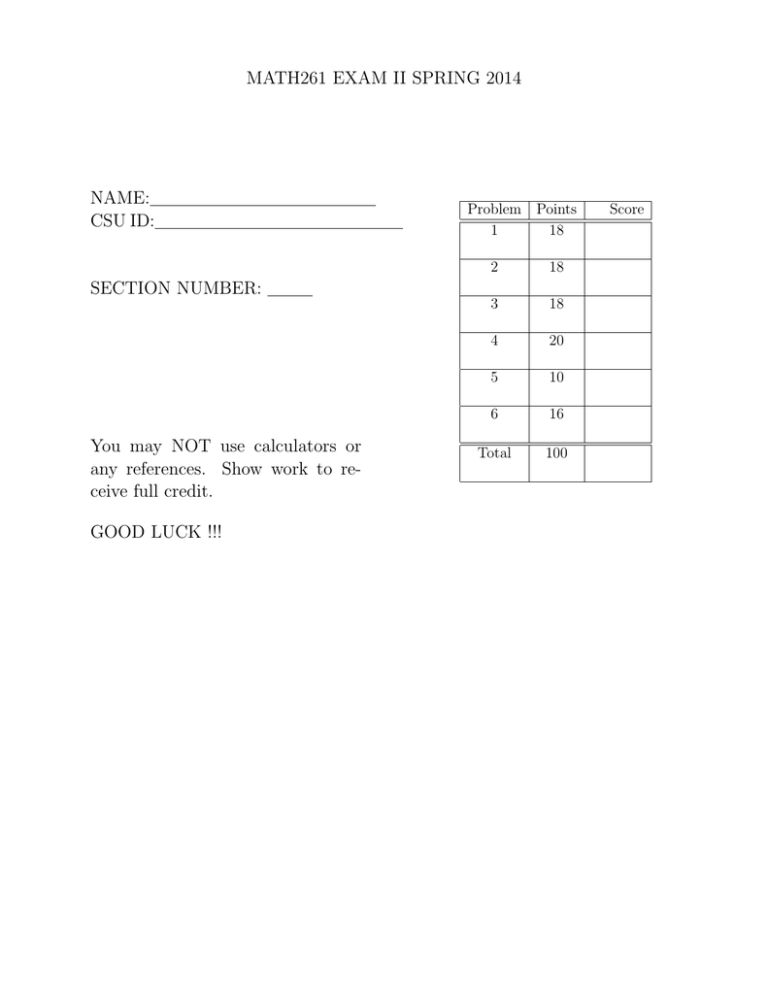
MATH261 EXAM II SPRING 2014 NAME: CSU ID: Problem Points 1 18 2 18 3 18 4 20 5 10 6 16 Total 100 SECTION NUMBER: You may NOT use calculators or any references. Show work to receive full credit. GOOD LUCK !!! Score 1. Consider the function f (x, y, z) = xy + ln z, and suppose that x = (u + 1)2 ew . w2 ,y u = u − w, z = (a) (6pts) Write down the general multivariable Chain Rule that computes ∂f /∂u in this case. DO NOT actually compute the partial derivatives involved until part (b). (b) (12pts) Use your formula in (a) to compute ∂f /∂u when u = 1, w = 0. 2. Consider the two surfaces S1 : x2 − 2xy + y 2 − 3z = 1 S2 : 2xy 2 − 10y + z 2 = −3 (a) (12pts) For each surface, find the vector normal at (3, 1, 1). (b) (6pts) Write a vector equation for the line tangent to the curve of intersection of the surfaces at (3, 1, 1). 3. Consider the function f (x, y) = (x2 − 4x)(y 2 − 6y). (a) (10pts) One of the critical points is (2, 3). Classify it. (b) (8pts) Find ALL the other critical points. DO NOT classify them. 4. We can use the Method of Lagrange Multipliers to find the minimum and maximum values of f (x, y) = x2 y if we only consider points (x, y) on the curve x2 + y 2 = 27. (a) (8pts) Set up the system of equations one must solve in order to use this Method to find the points at which the minimum and maximum occur. √ √ (b) (6pts) Verify that √ six possible solutions are (0, ±3 3), with λ = 0; (±3 2, 3), with λ = 3; (±3 2, −3), with λ = −3. (c) (6pts) If the solutions in (b) are the only possible solutions to the system in (a), what are the minimum and maximum values of f on the curve? This part can be done without completing (b). 5. (10pts) Find the rate of change of f (x, y, z) = (x + y 2 + z 3 )2 at the point (1, 1, 1) in the direction of i + k. Then, give a vector (it need not be a unit vector) in whose direction the MAXIMUM rate of change of f at (1, 1, 1) occurs. 6. (16pts) Evaluate Z 4Z 4 0 x y 2 exy dydx. Include a graph of the region.
